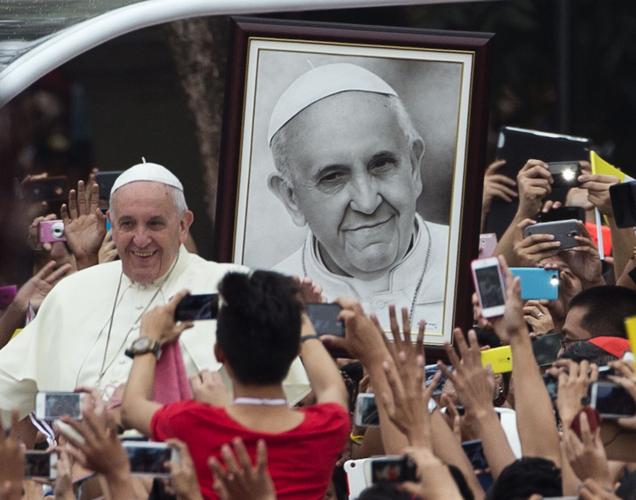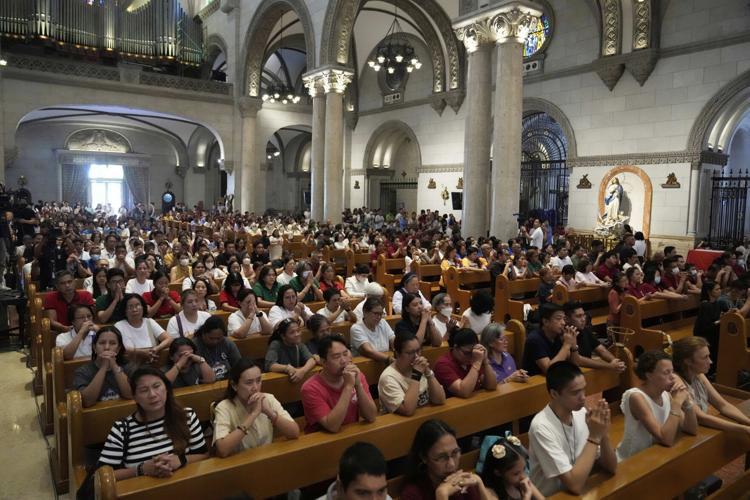Could a single journey transform a nation's spirit and leave an indelible mark on its history? The pastoral and state visit of Pope Francis to the Philippines in January 2015 did precisely that, uniting millions in a shared experience of faith, hope, and renewal.
From January 15th to 19th, 2015, the Philippines welcomed Pope Francis, an event that transcended the ordinary and resonated deeply within the hearts of Filipinos. His presence was more than just a papal visit; it was a testament to the enduring power of faith, compassion, and the unwavering spirit of a nation. The Pope's messages, delivered with sincerity and warmth, acted as a balm to the wounds of a people still recovering from tragedy and searching for solace. His words, coupled with his actions, created a powerful narrative that would forever be etched in the country's collective memory.
| Information | Details |
|---|---|
| Full Name | Jorge Mario Bergoglio |
| Born | December 17, 1936, Buenos Aires, Argentina |
| Elected Pope | March 13, 2013 |
| Previous Titles | Archbishop of Buenos Aires (1998-2013), Cardinal (2001) |
| Known For | Emphasis on mercy, compassion, and social justice; concern for the poor and marginalized; advocacy for environmental protection. |
| Key Initiatives | Laudato si' (encyclical on environmental care), Amoris laetitia (apostolic exhortation on family life). |
| Notable Quotes | "Who am I to judge?", "Be shepherds with the smell of sheep", "We must restore hope to young people, help the old, open up to the future, spread love. Be poor among the poor." |
| Website | Official Vatican Website |
The impact of Pope Francis's visit was immediately apparent. Millions of Filipinos, affectionately calling him "Lolo Kiko" (Grandpa Francis), flocked to see him. His presence was a source of profound joy and spiritual nourishment. The sheer scale of the gatherings, particularly the concluding mass at the Quirino Grandstand in Manila, which drew an estimated six million attendees, underscored the deep connection between the Pope and the Filipino people. This event reportedly became the largest papal gathering in history, a powerful testament to the strength of faith and the widespread admiration for Pope Francis.
The visit coincided with the administration of former President Benigno Aquino III, highlighting the significance of the event on a national level. It was a moment of unity, transcending political divides and uniting the entire nation in a shared experience. The Pope's message of hope and healing resonated with all, offering comfort and guidance during a time when many were still grappling with the aftermath of tragedy.
Beyond the large crowds and public displays of affection, Pope Francis's words carried immense weight. His messages focused on themes of mercy, compassion, and social justice, reflecting his core values. The theme of his Philippine tour, "Mercy and Compassion," became a leitmotif, woven into his speeches and actions. These messages weren't just sermons; they were a call to action, urging the faithful to live their faith through acts of kindness, understanding, and service to others. The Pope's emphasis on these virtues struck a chord with Filipinos, reinforcing their own deeply ingrained values of faith, family, and community.
The visit also had a deeply personal and emotional dimension. Pope Francis made it a priority to connect with those who had suffered. His visit to Tacloban City, the area hardest hit by the catastrophic Super Typhoon Yolanda (Haiyan), was particularly poignant. He spent an emotional day with survivors, offering them solace and reaffirming his commitment to their well-being. This act of solidarity demonstrated his profound concern for the most vulnerable and his dedication to those who had experienced immense loss.
The significance of the 2015 visit extended beyond mere ceremonial duties. Pope Francis's meeting with young Filipinos and religious leaders at the University of Santo Tomas in Manila was a significant event, providing an opportunity for dialogue and the exchange of ideas. During this meeting, the Pope emphasized the importance of values, encouraging the youth to be active participants in shaping a better future. His interactions with the young people of the Philippines underscored his belief in their potential and his commitment to fostering their spiritual and moral development.
Furthermore, the Pope's visit included the opportunity to honor and appreciate the local religious heritage. This was evident in the respect he showed to the two great saints of the Philippines, Saint Pedro Calungsod and Saint Lorenzo Ruiz. During the Mass in Manila, he called on the faithful not to be afraid, as they were not alone, and they had the support of these great saints. These words further cemented the Pope's connection to the Filipino people, reminding them of the rich history of their faith.
The visit was not without its logistical challenges. Pope Francis traveled aboard four different aircraft belonging to three different flag carriers during his time in the Philippines, demonstrating the scope and complexity of his itinerary. Despite the demands, he remained focused on connecting with the people and spreading his message of hope and love.
The impact of the Pope's visit extended into the broader sphere of the Catholic Church in the Philippines. The appointment of more than half of the Philippines' active bishops by Pope Francis reflected his commitment to shaping the Church's future. This influence served to strengthen the Church's presence and further solidify the bond between the Vatican and the Filipino people.
The visit was marked by significant moments and milestones. The concluding mass at the Quirino Grandstand was, as mentioned earlier, a historic gathering. The Pope's interactions with the survivors of Typhoon Yolanda, highlighting his concern over climate change, underscored the importance of environmental stewardship and social responsibility. His address at the Mall of Asia Arena in Manila provided a platform for him to inspire and encourage the faithful. These were not isolated instances, but rather carefully orchestrated elements designed to promote a message of hope, healing, and spiritual renewal.
The event provided a moment for reflection on the role of family and community. The Pope's words on family drew praise, and resonated deeply with the core values of Filipinos. The visit underscored the importance of these fundamental aspects of life and demonstrated a genuine understanding of the values that underpin the Filipino culture.
While the visit was a moment of celebration, it also carried a sense of urgency. In the context of his tour, Pope Francis met with survivors of natural calamities such as the Bohol earthquake and Super Typhoon Yolanda, and his focus on these communities underscores the importance of providing support and solidarity to those who are most in need.
The visit also brought to light the rise of influential figures within the Church, such as Cardinal Luis Antonio Tagle. Cardinal Tagle, a prominent figure in the Catholic Church, has played an instrumental role in shaping and influencing the church's trajectory. His rise reflects the growing importance of the Philippines within the global Catholic community. Cardinal Tagle's presence, along with the other Filipino Cardinals chosen from the Philippines, underscores the significance of this visit.
The impact of Pope Francis's visit to the Philippines continues to be felt today. His messages of hope, mercy, and compassion continue to inspire millions. The images of his interactions with the people, especially the survivors of Typhoon Yolanda, remain vivid in the collective memory. His visit provided a spiritual boost to the Philippines, reminding them of their unwavering faith and their capacity for resilience. It cemented the bond between the Vatican and the Filipino people, and served as a reminder of the enduring power of faith in the face of adversity.


